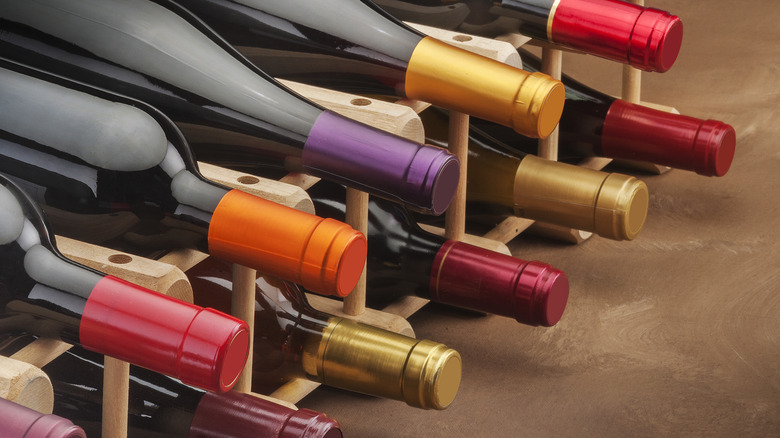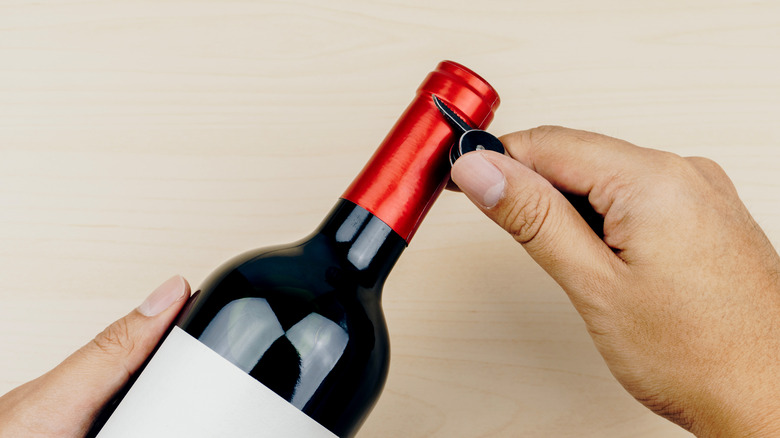What's The Point Of Foil Wrapper On Wine Bottles?
Wine can be tricky to understand, especially when it comes to the various features of a wine bottle and the purposes that they serve. A battle between function, tradition, and aesthetic, the top of your wine bottle is no exception. Forbes notes that roughly 60% of wines are sealed with a cork, meaning most bottlenecks are covered with a sleeve. But, what's the point of the foil wrapper?
The foil sleeve topping the cork and neck of a wine bottle is also called a capsule. While they're usually made from plastic or aluminum, The Washington Post reports that they were actually made from lead until 1993, before being banned in the United States and the European Union due to toxicity — talk about intoxication!
With many wine brands (budget and luxury) opting to cover their cuvées with eye-catching foils, it's fair to wonder whether foil protects flavor. However, according to Wine Spectator, this isn't the case. So, what purpose does the foil serve in the first place?
It once protected wine, but now is purely aesthetic
Contrary to popular belief, the foil wrapper isn't there to help keep a wine sealed — that's the job of the cork. Instead, Wine Enthusiast explains that historically, capsules were used to protect against rodents from gnawing through corks, along with preventing the counterfeiting of wine. Given that cellars have become more hygienic and counterfeiters more skilled, foil wrapping has become solely aesthetic.
Less a marker of quality and more of visual value, foil wrappers can help distinguish wines that are stored horizontally. This can be especially true for expensive wines since their capsules can help consumers instantly recognize a brand. But this attention to detail comes at a price, both financially and environmentally.
A costly addition for winemakers, using foil wrapping is also super unsustainable. According to VinePair, most capsules end up in a landfill, despite the fact that they are made from recyclable materials. With attention being drawn to low-intervention winemaking processes, winemakers are also starting to talk stock on how to eliminate their carbon footprint through packaging. Many wineries are now choosing to use glass stoppers, cover necks with wax, or forgo capsules completely.

